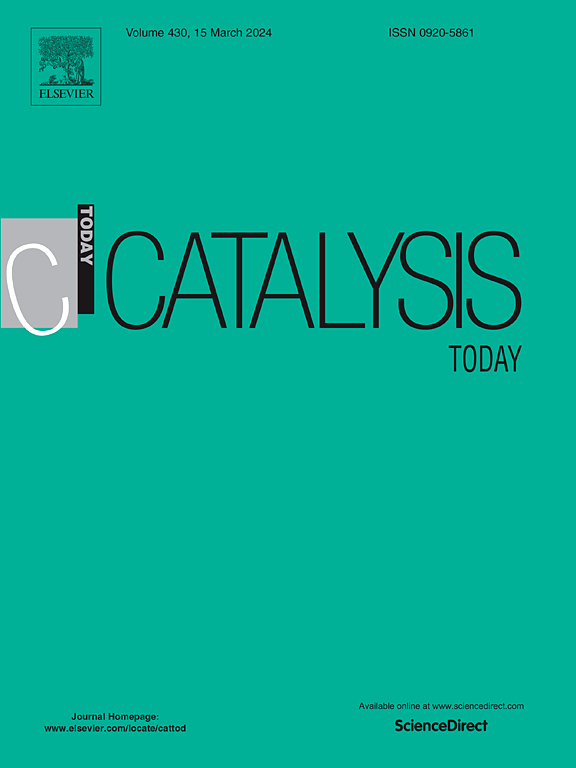Coking-driven activation of NixFe3-xO4 doped waste-derived carbon: From methanol decomposition to enhanced alkaline OER catalysis
IF 5.3
2区 化学
Q1 CHEMISTRY, APPLIED
引用次数: 0
Abstract
Hydrogen production via methanol decomposition is a promising route for sustainable energy, but catalyst deactivation due to coking remains a major challenge. The issue is even more critical for low-cost catalysts, as their reuse or disposal poses environmental and economic concerns. In this study, activated carbon derived from industrial coal-tar pitch waste was modified through two different hydrazine-based thermal treatments, doped with 40 wt% NixFe3-xO4 spinels, and subjected to prolonged methanol decomposition to induce coking. All synthesized and spent catalysts were tested for the alkaline oxygen evolution reaction (OER). Notably, the coked catalyst derived from low-temperature hydrazine treatment exhibited improved electrocatalytic performance compared to the parent materials, achieving considerably lower OER overpotentials due to an increased electrochemically active surface area and reduced charge transfer resistance. The carbon coking induced by the methanol decomposition was found to be beneficial for enhancing the overall electrochemical properties of the catalyst depending on their preparation procedure. These findings highlight a new strategy for repurposing spent catalysts in electrocatalytic applications, offering a sustainable approach to catalyst lifecycle management.
NixFe3-xO4掺杂废碳的焦化活化:从甲醇分解到增强碱性OER催化
甲醇分解制氢是一种很有前途的可持续能源,但由于焦化导致的催化剂失活仍然是一个主要挑战。对于低成本催化剂来说,这个问题更为关键,因为它们的再利用或处置会带来环境和经济问题。在这项研究中,从工业煤焦油沥青废料中提取的活性炭通过两种不同的肼基热处理进行改性,掺杂40 wt% NixFe3-xO4尖晶石,并进行长时间的甲醇分解以诱导焦化。对合成催化剂和废催化剂进行了碱性析氧反应(OER)测试。值得注意的是,与母材相比,经低温肼处理的焦化催化剂表现出更好的电催化性能,由于电化学活性表面积的增加和电荷转移阻力的降低,其OER过电位显著降低。甲醇分解引起的碳结焦有利于提高催化剂的整体电化学性能,这取决于催化剂的制备工艺。这些发现强调了在电催化应用中重新利用废催化剂的新策略,为催化剂生命周期管理提供了一种可持续的方法。
本文章由计算机程序翻译,如有差异,请以英文原文为准。
求助全文
约1分钟内获得全文
求助全文
来源期刊

Catalysis Today
化学-工程:化工
CiteScore
11.50
自引率
3.80%
发文量
573
审稿时长
2.9 months
期刊介绍:
Catalysis Today focuses on the rapid publication of original invited papers devoted to currently important topics in catalysis and related subjects. The journal only publishes special issues (Proposing a Catalysis Today Special Issue), each of which is supervised by Guest Editors who recruit individual papers and oversee the peer review process. Catalysis Today offers researchers in the field of catalysis in-depth overviews of topical issues.
Both fundamental and applied aspects of catalysis are covered. Subjects such as catalysis of immobilized organometallic and biocatalytic systems are welcome. Subjects related to catalysis such as experimental techniques, adsorption, process technology, synthesis, in situ characterization, computational, theoretical modeling, imaging and others are included if there is a clear relationship to catalysis.
 求助内容:
求助内容: 应助结果提醒方式:
应助结果提醒方式:


